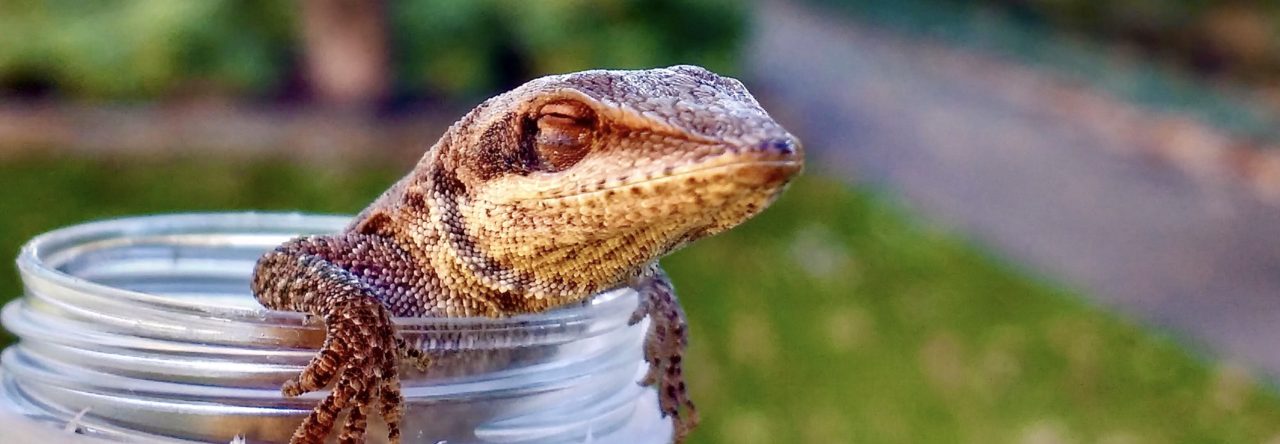Everyone (who reads this blog) knows that anoles are one of the most fascinating groups of organisms on the planet. We also all know that this makes them a remarkably popular lizard genus to study, a topic that Rich Glor has addressed on this blog previously. However, while dominant in some fields (and meetings, like Evolution or SICB) anoles scarcely make an appearance at others (ESA, IBS). This raises the question of whether anoles are really as popular as we think? How do they stack up to other sexy taxonomic groups like mammals, birds or bees?
A recent tweet and blog post by Chris Buddle from McGill gives the basis for an answer. He used a (quick and dirty) Web of Science search to find the number of publications per species within 15 haphazardly chosen Orders, merging these into higher taxonomic groups for visual comparison:
Buddle showed that research publications are strongly biased toward mammals (no surprise there), then herps, then birds (I admit, a priori, I thought 2nd and 3rd would be reversed). However, the obvious question which jumped to my mind (and, I’m sure, to yours) was: how do our favourite dewlapping demons compare? A quick search on Web of Science with search string ‘Anole OR Anolis’ (yes I could have gone with anol*, but this picked up a few thousand extra hits for anolyte) gave approximately 12,686 hits. Using The Reptile Database‘s number of 393 anole species (cue argument now), I roughly mapped the anole results on to Buddle’s plot:

Modified from: www.scilogs.com/expiscor/biodiversity-bias-the-relationship-between-taxon-diversity-and-research-publications
Anoles win! Perhaps not surprisingly, anoles are remarkably well studied given their diversity, at least compared to other groups defined at the Order level (keep in mind that, because publication intensity is uneven within taxa, averaging across a more diverse group will tend lower the numbers). Nonetheless, anoles annihilate the carnivores, which Buddle highlights as the most studied order with a publication to species ratio of 7. However, let’s not forget that the vast majority of these studies are on sagrei or carolinensis, so there are still hundreds of under-studied anoles (and really, can a species be over-studied?)
Lastly, before we get too smug about the popularity of our exalted study genus, with its publication to species ratio (pub:spp) of 32.3, I did a quick look at the numbers for the genus Parus. This genus (even after lumping it in with Poecile, Cyanistes, Lophophanes, and Periparus) had a pub:spp = 327.1. And within the herps? Well, Sceloporus clocks in at 85.7. And Xenopus‘ pub:spp is 12451.3! Of course, Xenopus’ ratio is heavily influenced by biomedical research. Also, as I mentioned above, the uneven study of species within genera means averaging over a diverse genus like anoles will drag down the ratio, compared to less diverse genera like Parus, Sceloporus, or Xenopus. Even so, while anoles are clearly very popular, we undoubtedly still have a lot of work still to do.




















